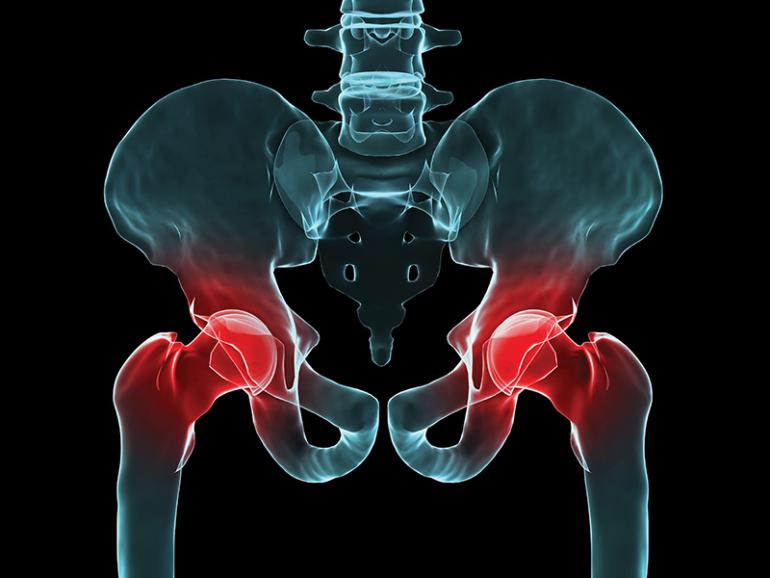Hip to the Hop
All about hip impingement.
The fastest-growing orthopedic surgery in the U.S. over the last ten years has been arthroscopic surgery of the hip. One reason for the spike is that improved imaging and research have given us more information. Another reason is that people have become more active and are simply incurring more injuries. This is especially true in communities like Bozeman, where there is a burgeoning youth-sports population, a huge outdoor crowd, and an aging baby-boomer group.
A significant contributor to hip injuries is an anatomical conditional known as Femoral Acetabular Impingement or FAI. There may be other causes of hip impingement, but true FAI occurs when there is either an out-of-round femoral head, a malformed socket (acetabulum), or both. These abnormalities can be seen on a regular X-ray, and they cause an incongruous fit of the hip joint. This poor fit can lead to a breakdown of the joint over time. Eventually, the hip labrum (the cartilaginous ring that surrounds the socket), may tear, and early onset arthritis will likely follow. The result of all this is pain, stiffness, and loss of function.
I tell nearly all of my patients that one should consider surgery only when all other forms of treatment have failed.
The classic presentation of FAI is pain in the groin or at the front of the hip that occurs with deep squatting, excessive hip flexion (lifting the knee higher than the hip), and twisting motions. As the condition progresses, there may be a marked loss of the hip’s range of motion, especially internal rotation. Outdoor athletes with FAI may find some springtime activities challenging. Rock climbing, for example, often requires lifting the knee high to access a foothold. Hiking, trail running, and scrambling up steep inclines may also pose a risk for similar reasons. Cycling, especially road cycling in the drop position, could be an issue as well. Even running—on uneven terrain or for an individual with flat feet—can provide excessive inward rotation of the leg and cause FAI-related pain.
If you have been diagnosed with FAI, however, it need not be all doom and gloom. Surgery down the road may not be inevitable. I tell nearly all of my patients that one should consider surgery only when all other forms of treatment have failed. There are many treatment strategies that can slow the progression of FAI so that arthroscopic surgery or hip replacement may be avoided, or at least delayed. Activity modification to avoid deep squatting, excessive hip flexion, and excessive twisting is critical. Strengthening the hip musculature (especially the gluteus medius) and the lumbo-pelvic stabilizing muscles is also very important. Further, there is research evidence that stretching the hip flexors can lessen the amount of impingement. See your physical therapist for proper exercise instruction. Joint-mobilization techniques performed by a physical therapist have also been shown to minimize pain and maximize range of motion in patients with FAI.
The key to successful management of FAI is to develop an understanding and awareness of what it is so that it can be detected early. The earlier the intervention, the greater the likelihood that the joint will stay healthy. And healthy joints will allow you to continue to enjoy everything that makes Bozeman so special.
John Sveen is a board-certified sports physical therapist at APRS Physical Therapy.











